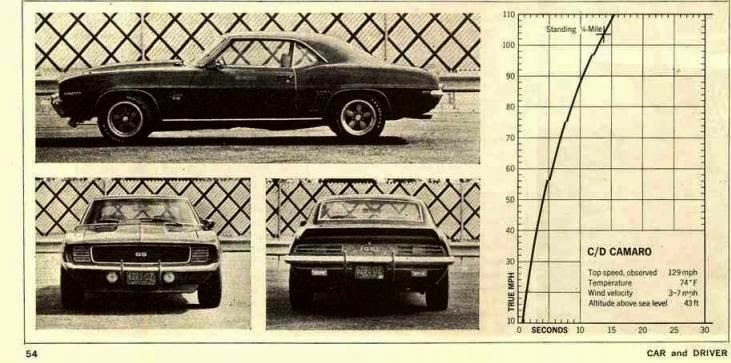
Don Yenko knew exactly what he wanted: to become the Carroll
Shelby of the Chevrolet world, to put his name on a car and to have people
instantly recognize it as the leading performance version of that car. And he
did indeed get what he wanted.
Just not with the car he initially intended.
Shortly after Don was born in 1927 in southwestern
Pennsylvania, his father, Frank, started a Durant dealership in 1928, then a
Chevrolet dealership in 1934. The Chevrolet dealership, located in
Bentleyville, Pennsylvania, took off and Frank opened a second in nearby
Canonsburg in 1949.
Don, however, didn't join the family business right away. He
earned his pilot's license at 16, served in the Air Force, then attended Penn
State University for a degree in Business Administration. Only after
graduating, at age 30, did he return to Canonsburg and the dealership and
decide to start racing Corvettes.
By the mid-1960s, however, Corvettes had grown weighty and
the Mustangs and Cobras had gained dominance on the racing circuit. "I got
tired of looking at the rear bumper of Mark Donohue's Mustang," Yenko
famously said. So Yenko took a cue from fellow racer Shelby--using his
connections through the dealership--to create a Chevrolet specifically for road
racing.
Yenko chose as his subject the Corvair Corsa, lighter than
the Corvette by about 500 pounds. According to an article he wrote for the June
1966 issue of Sports Car magazine, Yenko originally designed the aero
body add-ons using cut-up pizza boxes. He didn't get approval to run his
modified Corsa in SCCA until November 1965; significant only because he needed
to build at least 100 such cars by January 1, 1966, to fully qualify the cars
for D Production racing. He got the 100 Corsas from Chevrolet and, along with
his staff at the dealership, converted them all into Yenko Stingers in less
than two weeks.
"The story of the Yenko Stinger tells the story of
Yenko Sportscars," Mark Gillespie wrote in The Yenko Era, his book
collecting various tidbits of Yenko history. "Everything that came later
was tempered in the crucible of the Stinger. What Yenko Sportscars demonstrated
was that a small, close-knit organization, staffed by motivated people and
without the support of a major manufacturer, could succeed."
Yenko himself both raced and sold Stingers, but perhaps more
importantly, he established a nationwide network of dealerships that would sell
the cars (one of which was Nickey Chevrolet in Chicago). The Stinger proved
competitive, and thus the program continued into 1967, but Yenko soon decided
to apply what he learned with the Stinger to the Camaro Z/28 and take it into A
Sedan and Trans-Am racing.
That effort, which he called the Camaro Stormer, fizzled
quickly; Yenko sold just two. He soon tackled another project with a decidedly
different take on the Camaro. Rather than prepare it for road racing, Yenko saw
that Chevrolets, hamstrung by GM's 400-cu.in. limit for intermediates and
compacts, could no longer compete in both stoplight and sanctioned drag racing,
especially when stacked up against the various Hemi-powered Mopars and
427-powered Fords.
Enter Dick Harrell, who had previously worked with Nickey
Chevrolet, and Bill Thomas, who helped Dana Chevrolet in Los Angeles develop
its Camaro 427 conversion. Both Harrell and Thomas showed Yenko how to drop
450hp and 410hp 427-cu.in. big-blocks into the Camaro and create supercars
capable of dipping into the 11s at the dragstrip.
The Yenko Super Camaros took off, assisted by Harrell's
dragstrip campaign in one, and spawned similar 427-powered Chevelles and Novas.
By 1969, Yenko had convinced Chevrolet--via the COPO program--to plant 427s
into Camaros at the factory, saving Yenko the costs associated with the engine
swap. Yet the same bugaboos of rising insurance costs and governmental
oversight that curtailed the factory muscle offerings also put an end to the
Yenko Camaros after 1969.
Yenko made a few attempts to skirt those roadblocks with the
Yenko Deuce, a small-block-powered Nova, and the Yenko Stinger II, a
turbocharged Vega, but the Deuce proved short-lived and the Stinger II's
turbocharged engine ultimately didn't make it past the Environmental Protection
Agency.
All this time, Yenko continued to race Corvettes, either on
his own or as a co-driver with a number of prominent Corvette teams. After the
Yenko Supercars program came to a close, Yenko continued to sell performance
parts through a catalog and through his dealership.
But by 1982, even that came to an end when he sold the
dealership. Five years later, still an avid pilot, Yenko died when he
crash-landed his Cessna near Charleston, West Virginia.
Feature Article from Hemmings Muscle Machines
source: http://www.hemmings.com/mus/stories/2008/06/01/hmn_feature15.html
YOU ARE NOT JUST BUYING PARTS – YOU ARE GETTING OUR CAMARO EXPERTISE
Tags: camaro part, camaro parts, Camaro restoration parts, 69 camaro, 1969 camaro, aftermarket camero parts, chevrolet camaro, ss, z28, rs, chevrolet, restoration, 68 camaro, chevy, 67, 69, f-body, camaro, chevy camaro, chevrolet camaro, gm, z-28, 350, ls1, z/28, pace car, camaro ss, 69 camaro, first generation, copo, fbody, yenko, 67 camaro, 68 camaro, musclecar
http://www.stevescamaroparts.com
















